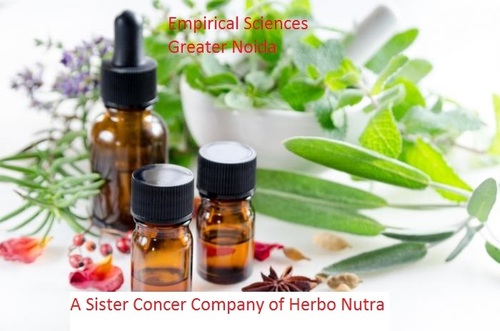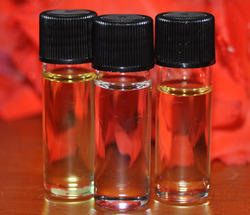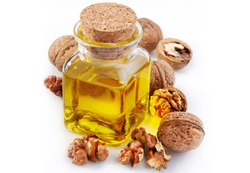- Home Page
- Company Profile
-
Our Products
- Pure Herbal Extracts
- Apamarga Extract
- Gojiberry Extract
- Dandelion Extracts
- Black Tea Extract
- Bhringraj Extract
- Manjishtha Extracts
- Cissus Quadrangularis Extract
- Chitrakmool Extract
- Amaltas Extract
- Artemisia Extract
- Bromelain - 2400 GDU
- Olive Leaf Extract
- Birch Leaf Extract
- L Glutathione Reduced
- Piperine Extract
- Shilajit Extract
- Devil's Claw Extract
- Celery Seed Extract
- Asafoetida Extract
- Muira Puama Extracts
- Apple Powder
- Ajwain Seed Extract
- Natural Herbal Extracts
- Papaya Leaf Extract
- Ganoderma Extract
- Schisandra Berry Extract
- Moringa Leaf Extract
- Fenugreek Extract
- Acacia Catechu Khadir Chhal Extract
- Arjuna Extract
- Tulsi Ark
- Neem Extract
- Kacip Fatimah Extract
- Boswellia Serrata Extract
- Natural Herbal Organic Extracts
- Passion Flower Extract
- Maitake Mushroom Extract
- Kelp Extract
- Astragalus Extract
- Nigella Sativa Extract
- Curcumin Extract
- Pansy Extracts
- Pumpkin Seed Extract
- Sea Buckthorn Extracts Powder
- Rosemary Extract
- Ginseng Extract
- Mucuna Pruriens Extract
- Ashoka Extract
- Gokhru Extract
- Rose Hip Extract
- Kudzu Extract
- Natural Phytosterol 95%
- Organic Herbal Extracts
- Thyme Extract
- Hawthorn Extract
- Nettle Leaf Extract
- Guduchi (Giloy) Extract
- Kiwi Extract
- Pomegranate Extract
- Papain Enzyme
- Pygeum Bark Extract
- Jamun Seed Extracts
- Shiitake Mushroom Extracts
- Garlic Extract
- Mitake Mushroom Extract
- Soya Isoflavone Extract
- Amla Extract
- Valerian Root Extracts Powder
- Raspberry Extract
- Hoodia Extract
- Blueberry Extract
- Ginger Extract
- Senna Extract
- Mangolina Bark Extracts
- Chamomile Extract
- Lotus Extract
- Basella Alba Extracts
- Morinda Citrifolia Extract
- Acerola Cherry Extract
- Propolis Extract
- Guava Leaf Extracts Powder
- Hedera Helix Extract
- Parsley Extract Powder
- Hops Flower Extract
- Guggal Extract
- Sesbania Grandiflora Extract
- Elder Berry Extract
- Aguaje Fruit Extract
- Black Cohosh Extract
- Grape Seed Extract
- Apple Extract
- Black Current Extract
- Wheat Grass Extract
- Bitter Melon Extract
- Lucuma Extract
- Mulberry Leaf Extract
- Vitex Agnus Extract
- Hibiscus Powder
- Acai Berry Extract
- Bamboo Extract
- Mangosteen Extract
- Broccoli Extract
- Burdock Root Extract
- Wheatgrass Extract
- Herbal Powder
- Shatavari Extract
- Gokharu Extract
- Berberine HCL
- Stem Cell Extract
- Herbal Raw Material
- Graviola Extract
- Apricot Extract
- L Arjinin Powder
- Brahmi Extract
- Cranberry Extract
- Astaxanthin Powder
- Herbal Extract
- Stevia Leaf Extract
- Apmarga Extracts
- Dandelion Extract
- Anthocyanin Powder
- Nutraceuticals Raw Materials
- Irvingia Gabonensis Extract
- Bitter Buckwheat Extract
- Spinach Extract
- Centrallia Asciatica
- Sage Leaf Extract
- Pure Thyme Extract
- Chlorella Extracts
- White Willow Bark
- American Ginseng
- Gymnema Sylvestris
- Coleus Root Extracts
- Siberian Ginseng Extract
- Dong Quai
- Enriched Yeast
- Colchicine USP
- Avena Sativa Extract
- Catuba Bark Extract
- Alfa Alfa Extract
- White Willow Bark Extract
- Omega 3 Powder
- Chlorella Extract
- Spirulina Powder
- American Ginseng Extract
- Guggul Extracts
- Beta Sitosterol Powder
- Red Yeast Rice Extract
- Coleus Extract
- Aloe Vera Extracts
- Cinnamon Extracts
- DHA Powder
- Cissus Quadrangularis
- Saga Leaf
- Ginkgo Biloba
- Siberian Ginseng
- DHA Veg Powder
- Ginkgo Biloba Extract
- Gymnema Sylvestre Extracts
- Quercetin Powder
- Juniperus Communis Extract
- Annona Squamosa Extracts (Shareefa)
- Green Apple Extract
- Tephrosia Purpurea Extract
- Soy Isoflavone
- Cocoa Husk Extract
- Terminalia Belerica Extract
- Chirata Extract (Swertia Chirayaita)
- Arrow root Extract (Maranta arundinacea)
- Punica Granatum Extract (Dadima/ Dadaka/ Anar)
- Pterocarpus marsupium Extract (Asana / Vijaysar / Beejaka)
- Butea monosperma Taub / B. frondosa(Palash / Dhark)
- (Vasaka/Adhatoda Zeylanica) Vasaka Extract
- Amaranthus Spinosus Extract (Tanduliya / Chaulai / Kateli)
- Cajanus Cajan Extract (Adaki / Arahar / Tuvar ki daal)
- L Theanine Powder
- Acacia Catechu Extract
- Cinnamon Powder
- Basella alba Leaf Extract
- Cucumis Melo Extract
- Organic-Natural (3.6%) Iron From Curry Leaf
- Mixed Tocopherol 30% Powder from Soya
- Citrus Bioflavonidoid Powder
- Salacia Reticulata Root Extract
- Mangosteen Extract Powder
- Natural (50%) Vitamin C From Amla Extract
- Organic-Natural (0.5%) Biotin From Sesbania Grandiflora
- Organic-Natural (5%) Folic acid From Lemon Peel Extract
- Organic-Natural Thiamine From Mung bean (Vigna radiata)
- Organic-Natural (2%) Beta Carotene From Carrot
- Organic-Natural (4%) Beta Carotene From Annatto Extract
- Organic-Natural (3.6%) Niacin From Holy Basil (Tulsi) Extract
- Citrus latifolia Extract
- Organic-Natural (4%) Magnesium From Lantana camara (Sage Leaf)
- Perna canaliculus (Green lipped mussel / Mussel Oil)
- Omega 6 Fatty Acid Powder
- Organic Millet Extract
- Hesperidin Powder
- silymarin extract
- Phycocyanin From Spirulina Plantesis
- Methyl Sulfonyl Methane (MSM) Powder
- Sphaeranthus Indicus Extract
- Nelumbo Nucifera Lotus Leaf Extract
- Mimosa Pudica Extract
- Medicinal Herbal Extract
- Noni Extract
- Barley Grass Extract
- Artimisia Extract
- Nettle Extract
- Konjac Extract Powder
- Echinacea Extract
- Resveratrol Powder
- Horse Chest Nut Extract
- White Kidney Bean Extracts
- Wild Yam Extract
- Mulethi Extract
- Banana Leaf Extract
- Tongkat Ali Extract
- Garcinia Extract
- Green Coffee Extracts
- Harad Extract
- Green Tea Extract
- Resveratrol Powder
- Green Coffee Extract
- Wort Plant Extract
- Yarba Mate Extract
- Yohambe Extract
- Essential Oils
- Palmarosa Oil
- Balsam peru
- Lemon Oil
- Tea TREE oIL
- LemonGrass Oil
- Rose Essential Oil
- Ylang Ylang Oil
- Pure Frankincense Oil
- Citronella Essential Oil
- Lavender Essential Oil
- Jasmine Essential Oil
- Peppermint Oil
- Wheat Germ Oil
- Walnut Oils
- Macadamia Nut Oil
- Olive Oil
- Grape Seed Oil
- Pure Hazelnut Oil
- Carrot oil
- Argan Oil
- Apricot Oil
- Natural Almond Oil
- Jojoba Oil
- Basil Oil
- Lemongrass Essential Oil
- Essential Oils
- Bitter Orange
- Sandalwood Oil
- Rosemary Oil
- Aloe Vera Essential Oil
- Nagarmotha Oil
- Frangipani Oil
- Fenugreek CO2 Oil
- Geranium Oil
- Treemoss Absolute
- Balsam Copaiba
- Bay Oil
- Spearmint Oil
- Lavandin Oil
- Mace Absolute
- Mandarine Oil Yellow
- Buchu Leaf Oil
- Turmeric Oleoresin
- Ginger Oleoresin
- Frankincense OIl
- Balsam peru
- Ambrette Seed Absolute Natural
- Medium Chain Triglycerides Oil CCTG MCT Oil
- Ratio Extract
- Spray Dried Powders
- Food Ingredients
- Natural Food Colours
- Sea Buckthorn Products
- Active Pharmaceutical Ingredient
- Pure Herbal Extracts
- Contact Us
Sandalwood Oil
MOQ : 1 , , Kilograms
Sandalwood Oil Specification
- Appearance
- Oil
- Purity
- 100% pure
- Solubility
- Soluble in Alcohol & Oils
- Storage
- Store in Cool
- Raw Material
- Wood
- Product Type
- Pure Essential Oils
- Ingredients
- Sandal Wood
- Age Group
- Adults
- Feature
- Fragrance Compound
- Shelf Life
- 2 Years
- Storage Instructions
- Cool & Dry Place
Sandalwood Oil Trade Information
- Minimum Order Quantity
- 1 , , Kilograms
- Main Domestic Market
- All India
About Sandalwood Oil
Indian sandalwood (S. album) is grown on a large scale. Santalum ellipticum, S. freycinetianum, and S. paniculatum, the Hawaiian sandalwood, were also used and considered high quality. These three species were exploited between 1790 and 1825 before the supply of trees ran out (a fourth species, S. haleakalae, occurs only in subalpine areas and was never exported). Although S. freycinetianum and S. paniculatum are relatively common today, they have not regained their former abundance or size, and S. ellipticum remains rare.[1][2]Santalum spicatum (Australian sandalwood) is used by aromatherapists and perfumers. The concentration differs considerably from other Santalum species. In the 1840s, sandalwood was Western Australias biggest export earner. Oil was distilled for the first time in 1875, and by the turn of the century, production of Australian sandalwood oil was intermittent.Sandalwood oil has a distinctive soft, warm, smooth, creamy and milky precious-wood scent.

Tell us about your requirement

Price:
Quantity
Select Unit
- 50
- 100
- 200
- 250
- 500
- 1000+
Additional detail
Mobile number
Email
More Products in Essential Oils Category
Basil Oil
Price 600 INR / Kilograms
Minimum Order Quantity : 525 Kilograms
Purity : 100% pure
Product Type : Pure Essential Oils
Age Group : Adults
Storage : Store in Cool
Rose Essential Oil
Price 1800 INR / Kilograms
Minimum Order Quantity : 525 Kilograms
Purity : 99%
Product Type : Pure Essential Oils
Age Group : All Age Group
Walnut Oils
Minimum Order Quantity : 525 Kilograms
Purity : 100% pure
Product Type : Pure Essential Oils
Age Group : Adults
Storage : Store in Cool
Lavender Essential Oil
Minimum Order Quantity : 525 Kilograms
Purity : 99%
Product Type : Pure Essential Oils
Age Group : Adults
Storage : Store in Cool


 Send Inquiry
Send Inquiry







